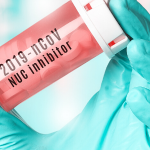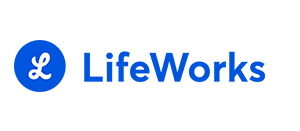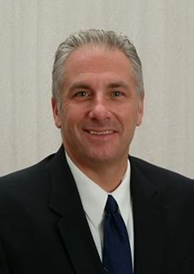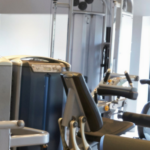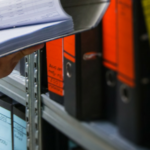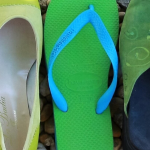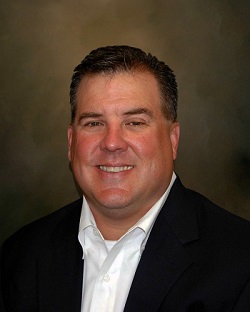COVID-19 Coronavirus EMS Advisory 1
This guidance is written to offer American Ambulance Association members the situational background and a list of resources and websites with which to draw guidance and further updates on the latest situation with COVID-19, colloquially referred to as “Coronavirus.” Key information for this update has been drawn from the NHTSA EMS Focus series webinar What EMS, 911 and Other Public Safety Personnel Need to Know About COVID-19, which took place on February 24, 2020. The on-demand recording is available below.
General Information
Background
The COVID-19 Coronavirus Disease was first reported in Wuhan China in December 2019. CDC identifies that it was caused by the virus SARS – CoV-2. Early on, many patients were reported to have a link to a large seafood and live animal market. Later, patients did not have exposure to animal markets which indicates person-to-person transmission. Travel-related exportation of cases into the US was first reported January 21, 2020. For reference the first North American EMS experience of COVID-19 patient transport, including key lessons learned, can be found in the EMS 1 article Transporting Patient 1.
Spread and Identification
Global investigations are now ongoing to better understand the spread. Based on what is known about other coronaviruses, it is presumed to spread primarily through person-to-person contact and may occur when respiratory droplets are produced when an infected person costs or sneezes. Spread could also occur when touching a surface or object that has the virus on it and when touching the mouth, nose, or eyes. Again, research is still ongoing, and advice and guidance will inevitably follow.
For the cases that have been identified so far, those patients with COVID19 have reportedly had mild to severe respiratory illness with symptoms including fever and shortness of breath. Symptoms have typically appeared 2 to 14 days after exposure. Both the WHO and CDC advise that patients that have been to China and develop the symptoms should call their doctors.
COVID-19 Prevention and Treatment
To date, 30 international locations, in addition to the US, have reported confirmed cases of COVID-19 infection. Inside the US, two instances of person-to-person spread of the virus have been detected. In both cases, these occurred after close and prolonged contact with a traveler who had recently returned from Wuhan, China.
The CDC activated its Emergency Operations Center (EOC) on January 21 and is coordinating closely with state and local partners to assist with identifying cases early; conducting case investigations; and learning about the virology, transmission, and clinical spectrum for this disease. The CDC is continuing to develop and refine guidance for multiple audiences, including the first responder and public safety communities.
As at the date of publication there is still no specific antiviral treatment licensed for COVID-19, although the WHO and its affiliates are working to develop this.
The following are recommended preventative measures for COVID-19 and many other respiratory illnesses:
- Wash your hands often with soap and water for at least 20 seconds.
- Use an alcohol-based hand sanitizer with at least 60% if soap and water are not readily available.
- Avoid touching your eyes, nose, and mouth with unwashed hands.
- Avoid contact with people who are sick.
- Stay home when you are sick.
- Cover your cough or sneeze with a tissue, then throw it away.
- Clean and disinfect frequently touched objects and surfaces.
Interim Guidance for EMS and 911
The Centers for Disease Control (CDC) has issued its Interim Guidance for Emergency Medical Services (EMS) Systems and 911 Public Safety Answering Points (PSAPs) for COVID-19 in the United States.
The guidance identifies EMS as vital in responding to and providing emergency treatment for the ill. The nature of our mobile healthcare service delivery presents unique challenges in the working environment. It also identifies that coordination between PSAPs and EMS is critical.
Key points are summarized below:
Recommendations for 911 PSAP Locations
The link between PSAPs and EMS is essential. With the advent of COVID19 there is a need to modify caller queries to question callers and determine the possibility that the call concerns a person who may have signs or symptoms and risk factors for COVID19.
The International Academy of Emergency Dispatch (IAED) recommends that agencies using its Medical Priority Dispatch System (MPDS) should use its Emerging Infectious Disease Surveillance (EIDS) Tool within the Sick Person and Breathing Problem protocols. For those that are not MPDS users, IAED is offering its EIDS surveillance Tool for Coronavirus, SRI, MERS and Ebola-free of charge under a limited use agreement.
Recommended Personal Protective Equipment (PPE)
The CDC recommends that while involved in the direct care of patients the following PPE should be worn:
- Single pair of disposable examination gloves
- Disposable isolation gown
- Respiratory protection (N95 or higher)
- Eye Protection (goggles or disposable face shield)
EMS Transport of a Patient Under Investigation (PUI) or Patient with Confirmed COVID19
- Notify receiving healthcare facility so appropriate precautions can be put in place
- Discourage family and contacts from riding in transport vehicle
- Isolate the vehicle driver from the patient compartment by closing the windows between compartments and ensuring that the vehicle ventilation system is set to the non-recirculated mode
- Document patient care
Cleaning EMS Transport Vehicles After Transporting PUI or Patient
- Don PPE for cleaning with disposable gown and gloves, facemask, and goggles or face shield if splashes are anticipated
- Routine cleaning and infection procedures should follow organizational standard operating procedures
- Use protect use products with EPA-approved emergent viral pathogens claims
Once transport is complete, organizations should notify state or local public health authorities for follow up. Additionally agencies should (if not done already) develop policies for assessing exposure risk and management of EMS personnel, report any potential exposure to the chain of command, and watch for fever or respiratory symptoms amongst staff.
Employers Responsibilities
While not specific to COVID-19, agencies should:
- Assess current practices and policies for infection control
- Job- or task-specific education and training
- PPE training and supply
- Decontamination processes and supplies
Local EMS Considerations
- PPE supplies
- 911 and EMD call taking activities
- Appropriate approach to potential patients
- Educational resources for EMS personnel
- Interaction with local public health/healthcare systems/emergency management
- Interaction with local fire and law enforcement
- Considerations for local jails
Further Reading
- World Health Organization (WHO)—For a wider perspective, the WHO provides both a daily live online briefing and written situation report.
- FirstWatch—FirstWatch Solutions maintains a Health Intelligence site that is available for all to use. The site is not limited to COVID19 but is a useful reference to emerging health trends. Additionally, FirstWatch, in partnership with the Paramedic Chiefs of Canada, is presenting regular webinars on COVID-19 which can be located via the Health Intelligence web page.
- Updated information about COVID19
- Infection prevention and control recommendations
- Additional information for healthcare personnel
- CDC’s case definition for a person under investigation (PUI) for COVID19
- CDC Quarantine Station Contact List
- Guideline for Isolation Precautions: Preventing Transmission of Infectious Agents in Healthcare Settings (2007)
- Exposure risk and management
- Infectious Disease Playbook
Conclusion
The COVID19 situation constantly evolving. Agencies should defer to their local EMS authorities, Public Health departments, and the CDC for definitive guidance. Going forward, the AAA will continue to both monitor the disease and alert issues to the membership.
